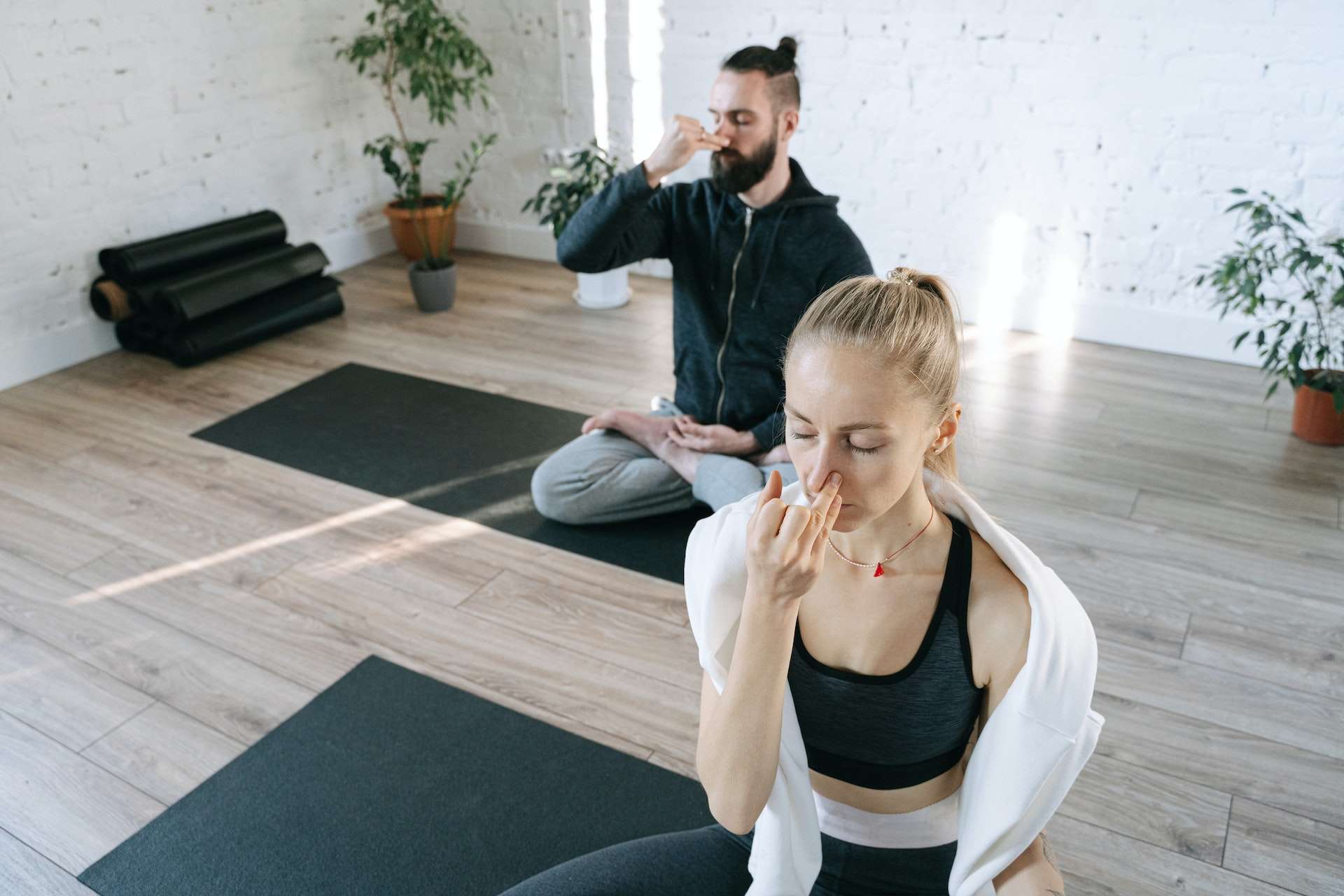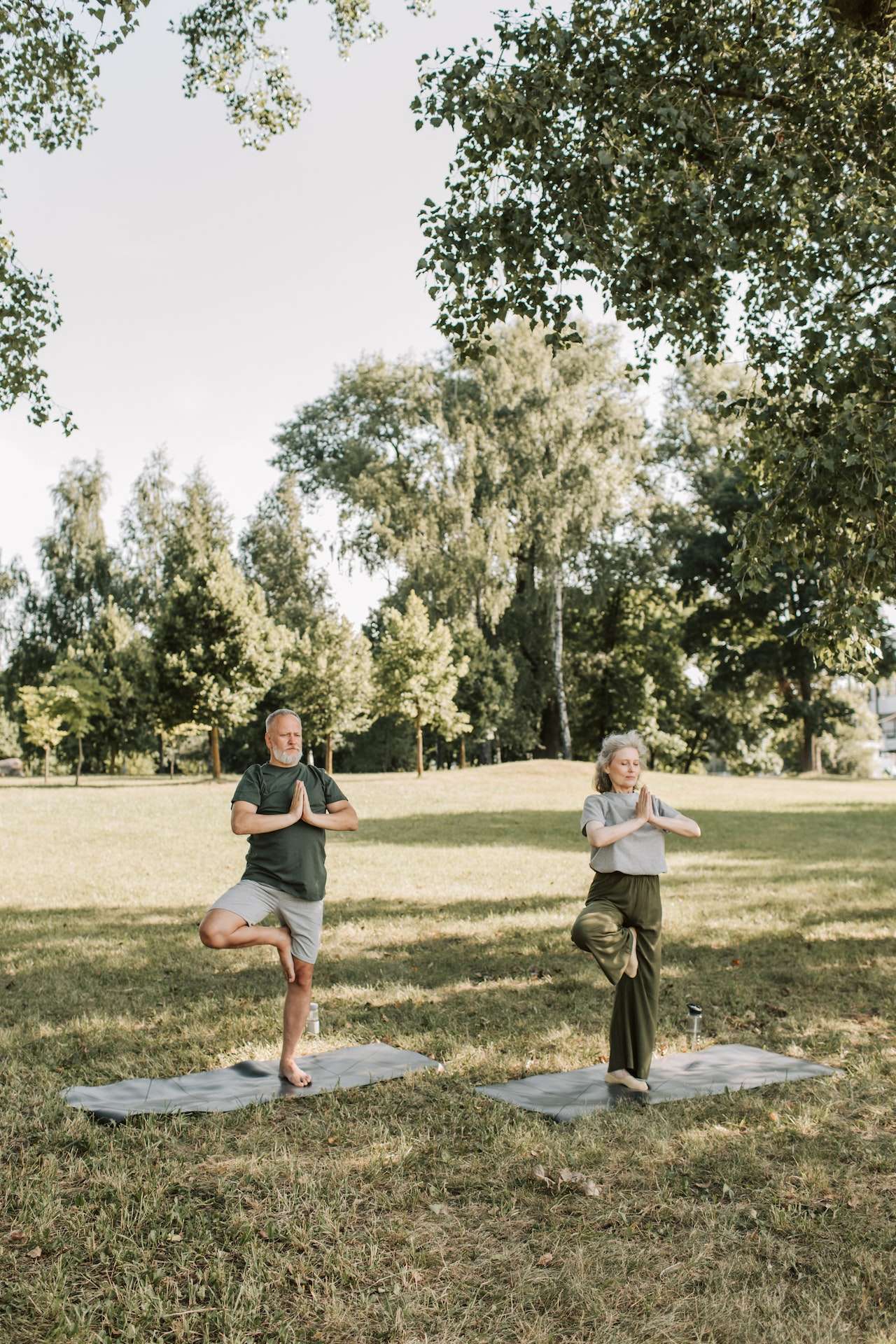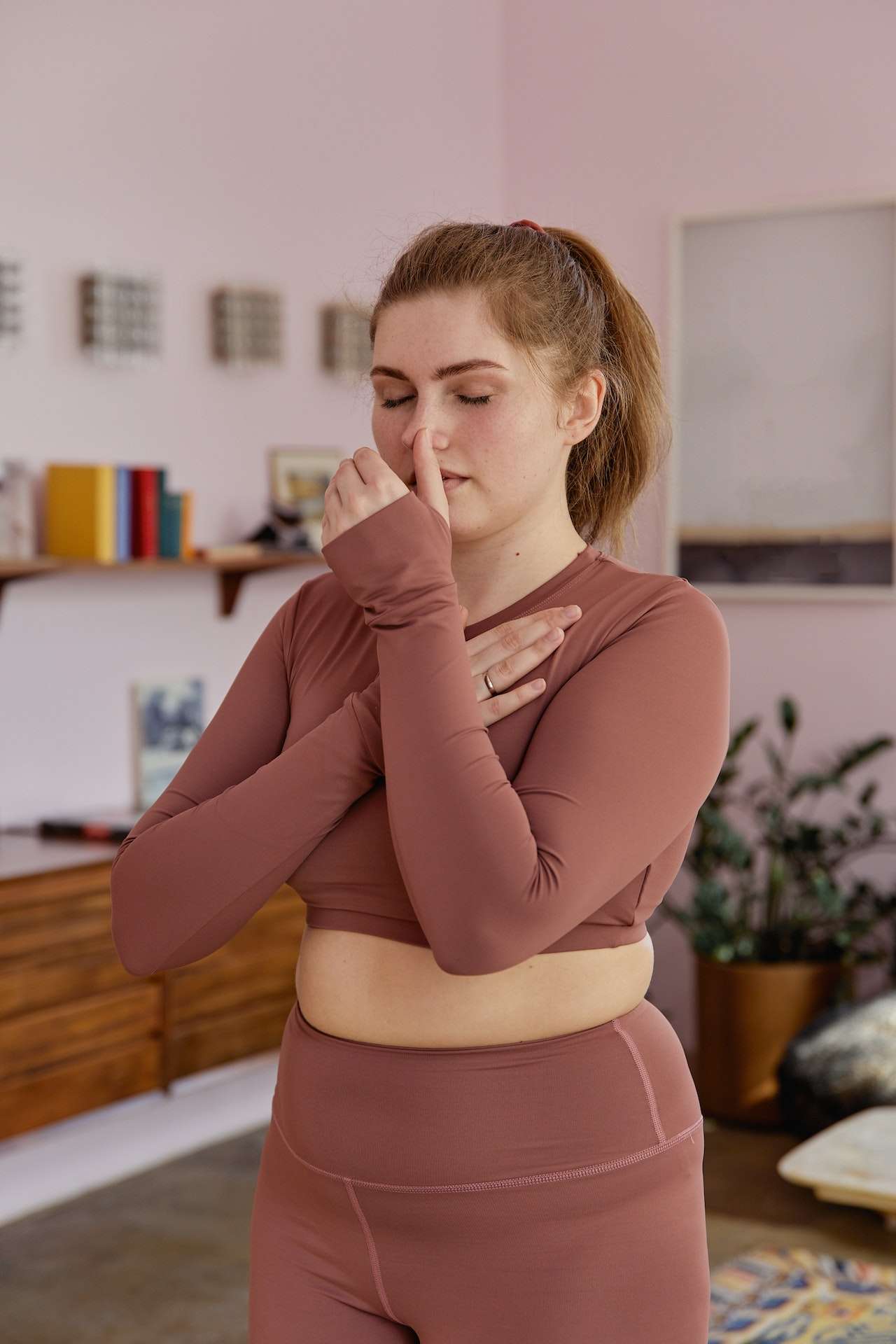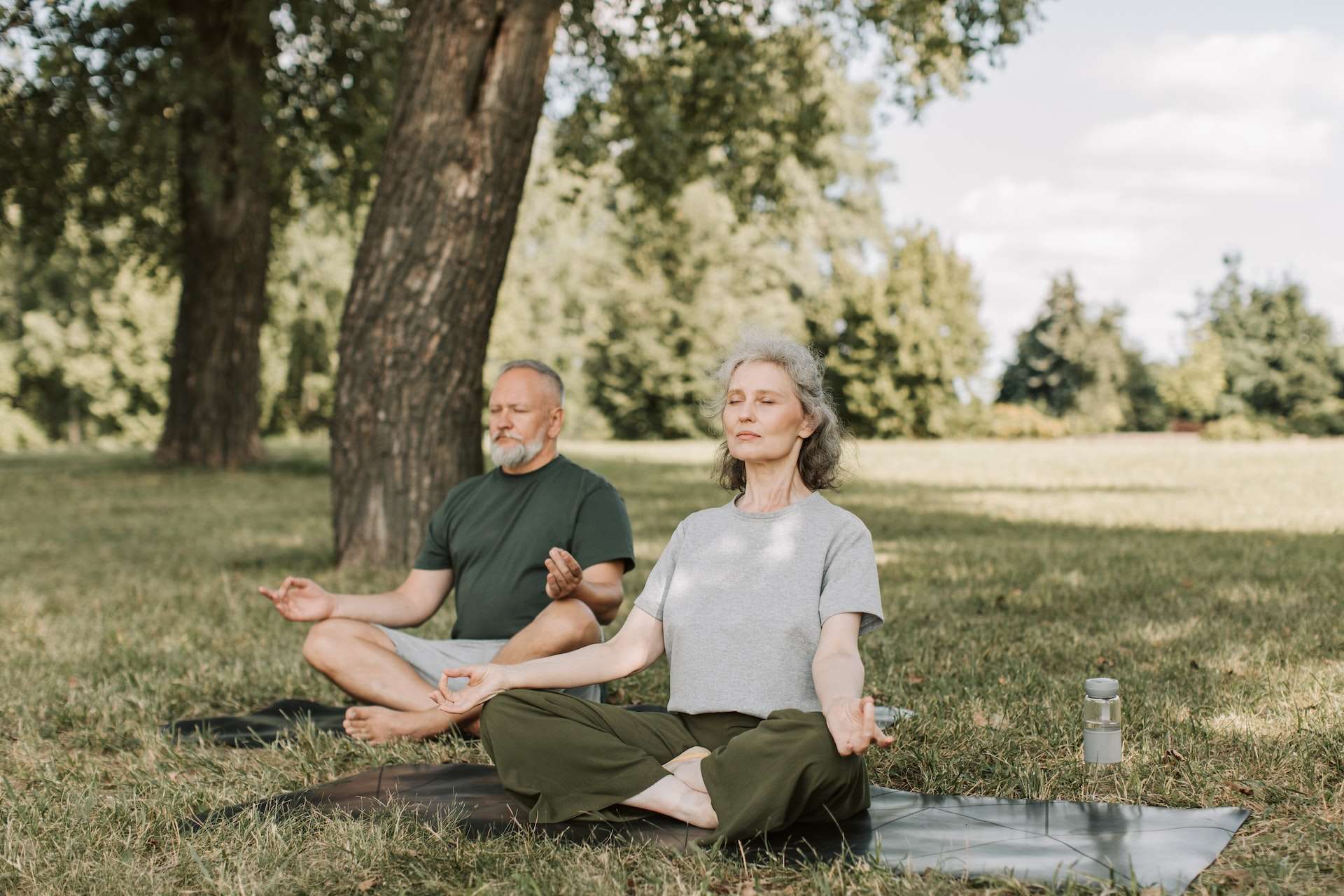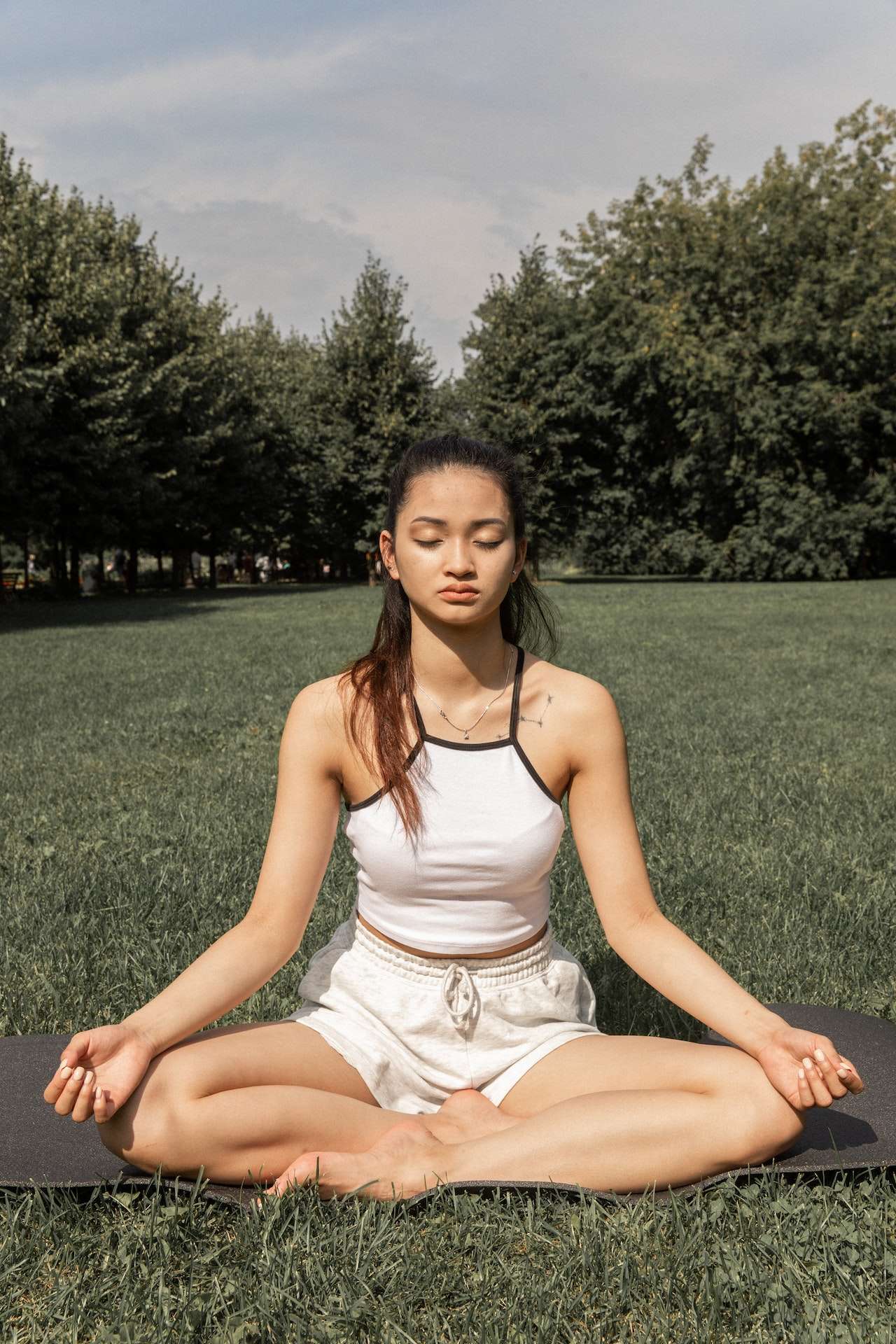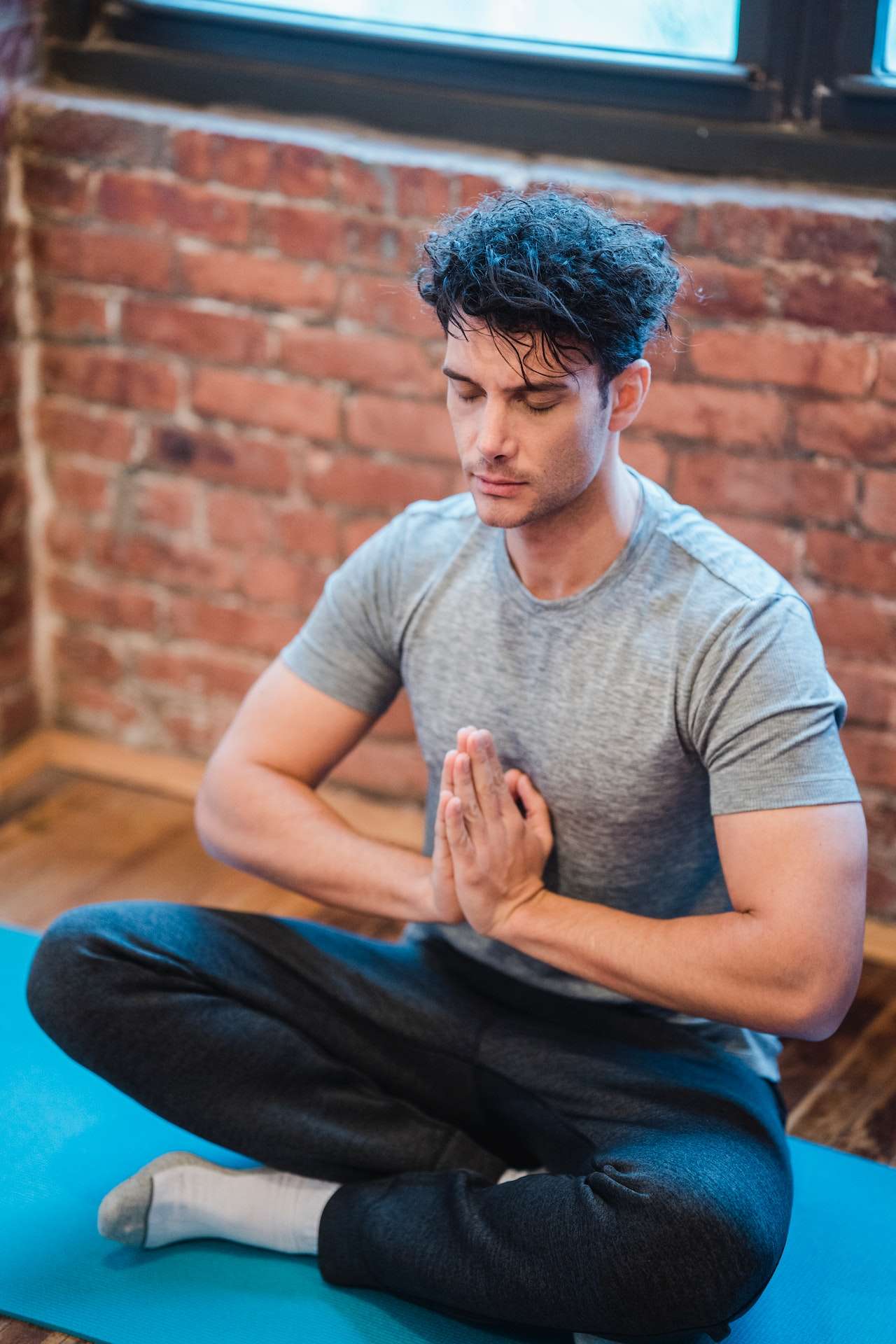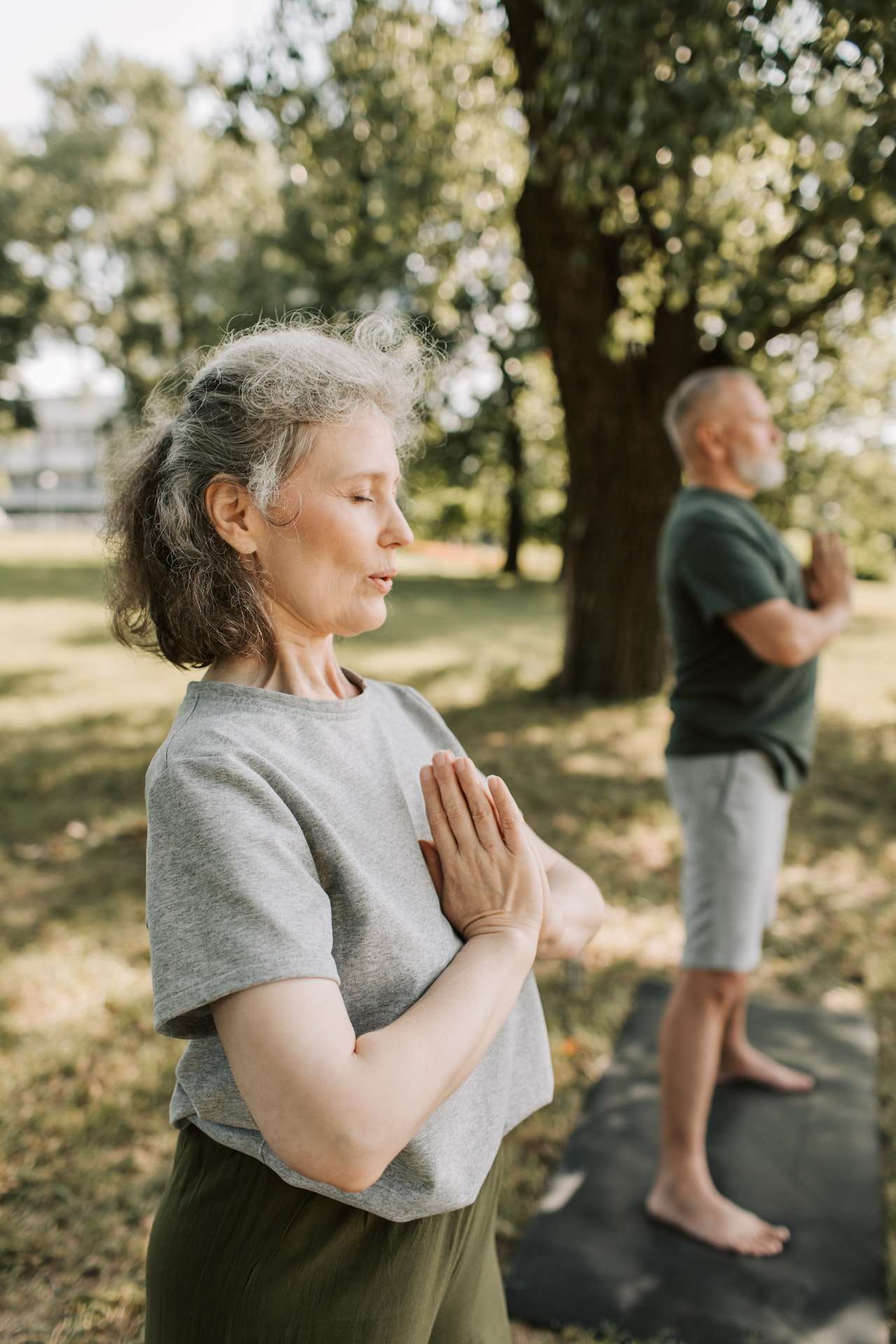|
Have you ever heard of breathing Yoga? If so, the chances are good that you’ve been wondering what it is and how it works. Well, I’m here to tell you that breath yoga isn’t a mysterious practice – it’s a powerful tool for managing stress and improving overall health. In this article, I will explain breathing yoga and some standard breathing techniques used in this practice. Now, I know what some of you may think: “Who has time for another form of exercise?” But don’t worry – breathing exercises only require a little time or effort. All you need is 5-10 minutes per day! Breathe Yoga can easily be incorporated into your daily routine without taking up too much time. So if you’re curious about the benefits of breathing Yoga and want to learn more about the standard breathing techniques used in this practice, keep reading! You’ll discover why breathing Yoga is beneficial and how simple breathing exercises can improve your overall health and well-being.
Table of Contents
show
Breathing Techniques In YogaBreathing techniques in Yoga have a variety of benefits. Research has found that Yoga is associated with improved quality of life, better physical and mental health, and increased overall well-being. Breathe Yoga is a form of meditation and breathing exercises to calm the mind and body while increasing strength, flexibility, and balance. Breathing yoga aims to develop mindfulness through breathing techniques that help clarify our thoughts, feelings, and emotions. In breathing yoga, breath control helps open the energy channels throughout your body. This allows for more efficient delivery of oxygen to the cells in your body, which helps reduce stress levels. Focusing on your breath teaches you how to stay present at the moment by allowing all other thoughts to pass away from your mind as you concentrate on each inhale and exhale.
Additionally, Yoga can help improve posture by encouraging you to take deeper breaths with proper alignment. Focusing on slower, longer breaths during breathing yoga sessions can improve concentration and gain insight into how your body responds under pressure or stress. Furthermore, mindful breathing can help reduce fatigue and increase endurance to perform mentally and physically at our highest potential. Yoga breathing also uses the power of visualization as it encourages us to imagine our breath passing through different parts of our bodies. At the same time, we focus on each inhalation or exhalation. These techniques help us understand how our bodies react differently when doing something stressful or challenging and when we are relaxed or enjoying a peaceful moment. With regular breathing exercises in breathing yoga classes, practitioners will reap all the incredible benefits this ancient practice offers, including increased relaxation, improved mental clarity and emotional balance, and heightened physical strength. The Importance Of Breath Control In YogaThe importance of breath control in Yoga is not to be underestimated. Breathing is a vital part of Yoga; many techniques are used to master the art of breath control. With the proper practice and dedication, breathing can become essential to your daily life, allowing you to manage stress and anxiety better. The benefits of controlling your breath can be felt both mentally and physically. When practicing breathing yoga, techniques such as pranayama (or ocean breath) can help improve lung capacity and bring more oxygen into the bloodstream, increasing vitality and energy levels. It also has a calming effect on the body and mind which can help reduce stress levels. Furthermore, breathing exercises can help strengthen the diaphragm muscles, aiding digestion and overall health. In addition to its physical benefits, breathing Yoga teaches us to focus on our breath to increase awareness and mindfulness during our practice. This helps us cultivate inner peace, which further aids relaxation. By understanding how to deeply inhale through your nose or exhale out of your mouth with long slow breaths during breathing yoga classes or when practicing at home, we gain greater control over our emotions, which leads to improved concentration, alertness, and clarity of thought – all essential components for daily life. Breathing is one of the essential aspects when it comes to practicing Yoga. Hence, yogis must get familiar with breathing techniques like ujjayi pranayama: ocean breath. Doing so will open up a whole new world of possibilities for bettering physical health while calming the mind. Ujjayi Pranayama: Ocean BreathUjjayi pranayama, also known as ocean breath, is a powerful breathing technique in Yoga. It is typically done with a deep and steady inhalation, followed by an exhalation through the nose. This type of breathing helps to calm the mind, reduce stress and anxiety, and increase focus. The sound of this breathing technique resembles that of ocean waves, thus the name ‘ocean breath.’ At Breathe Yoga Studios, we practice ujjayi pranayama regularly. We use our Breathe Yoga Mats to ensure proper posture while doing this breathing exercise. It greatly benefits those who practice it regularly at our Breathe Yoga and Wellness Center in Atlanta. It helps us stay focused and mindful during our practice at Breathe Yoga Barre or any other classes in our studio.
Ujjayi is one of the most important techniques used in Yoga, regardless if you are practicing at Breathe Yoga Uluwatu or any other Breathe Yoga & Barre location worldwide. It helps bring awareness to your body and can be especially helpful for those seeking relaxation from their busy lives. Taking part in ujjayi pranayama helps balance your mind and body to make the most out of your Breathe Yoga Bradford or other studio experience! By incorporating this powerful breathing technique into your routine at any Breathe Yoga Wellness center, you will be well on your way to mastering Yoga poses with ease. Nadi Shodhana Pranayama: Alternate Nostril BreathingNadi Shodhana Pranayama, or Alternate Nostril Breathing, is one of the most popular breathing techniques in breathing yoga. This ancient practice helps to relieve stress and promote balance by calming the mind and body. It’s a great way to start your yoga practice and can be done anywhere. This technique involves alternately blocking one nostril with your fingers while exhaling and inhaling through the other nostril. First, block your right nostril with your thumb, then inhale deeply through your left nostril. Then switch sides and block the left nostril with your ring finger, exhaling deeply from the right side. Repeat this cycle several times until you feel relaxed and balanced. Using this breathing technique in Yoga, you are helping to create a sense of stillness within yourself, which will help you stay focused during your practice. With the regular practice of Nadi Shodhana Pranayama, you can experience improved concentration and an increased sense of calmness in all areas of life. Now let’s explore Kapalabhati Pranayama: Skull Shining Breath – another powerful breathing technique used in breathing Yoga that can help to bring peace and balance into our lives. Kapalabhati Pranayama: Skull Shining BreathKapalabhati pranayama, also known as the skull-shining breath, is a powerful form of breathing yoga. It involves rapid inhalations and exhalations that help to move energy through your body and clear blockages. This breathing technique is especially effective for those seeking to increase their focus and mental clarity. Kapalabhati requires you to take deep breaths, then quickly exhale with force while contracting the abdominal muscles. The inhalation will happen naturally after the exhalation. You should maintain this rhythm for several minutes, allowing your breath to become faster and stronger as you go. This type of breathing yoga can be done in any comfortable position – sitting or lying down – and can be used as part of a more considerable breathing practice or on its own.
For those just starting with kapalabhati pranayama, it is essential to remember that it may take some time to find your natural rhythm and see the desired results. As with all types of breathing yoga clothing, locations, mats with rabbit flaps, and owner and teacher training are all critical factors when practicing this type of breathing technique. Kundalini yoga breathing kapalabhati is an advanced practice that involves longer sessions (up to 30 minutes) and deeper breaths than traditional kapalabhati pranayama. This variation can provide more intense results and should only be attempted once you have mastered the basics of kapalabhati pranayama. If you’re interested in exploring this type of breathing yoga, consider signing up for a breathing yoga festival or taking advantage of free classes offered by local studios to get acquainted with the basics before diving into more advanced techniques like kundalini yoga breathing kapalabhati. With dedication and regular practice, you may feel calmer and more focused than ever! Bhastrika Pranayama: Bellows BreathBhastrika pranayama, or bellows breath, is a powerful technique in breathing Yoga involving rapid inhalations and exhalations. It can energize the body and mind while calming the nervous system. According to a recent survey conducted by Breathe Yoga Studio, 87% of their students have experienced decreased stress after practicing bhastrika pranayama. The breathing exercise starts with inhaling deeply through both nostrils and then exhaling rapidly with equal force. This process is repeated several times consecutively without pausing in between. It is essential to keep the breath steady and rhythmic during this practice. Doing this helps open up your lungs and clear out any blockages that can cause shallow breathing or difficulty getting air into your lungs. It also helps increase oxygen intake, improving energy levels throughout the day. Bhastrika pranayama can be done in all settings, from Breathe Yoga Room to Breathe Yoga Salt retreats to even at home with a Breathe Yoga Trim or Breathe Yoga Oahu video tutorial. This type of breathing is especially beneficial for people who feel fatigued and want an instant energy boost since it increases heart rate and gets the blood flowing quickly throughout the body. Moreover, bhastrika pranayama provides mental clarity while creating a sense of calmness that can help reduce anxiety levels over time when practiced regularly at a Breathe Yoga Kempton Park studio or elsewhere. With its many benefits, it’s no wonder why so many people have utilized this ancient practice daily! Dirga Pranayama: Three-Part BreathDirga pranayama, or three-part breath, is an essential breathing technique in breathing yoga. It helps to balance the breath and bring a sense of calmness and clarity to the mind. The breathing practice involves inhaling deeply into the abdomen, chest, and upper chest before slowly exhaling in reverse order. This ancient practice has been around for thousands of years, with research showing that it can reduce stress levels by up to 25%.
When doing dirga pranayama, it’s essential to focus on slow and even breaths while keeping your body relaxed. Keep your mouth closed during the technique, encouraging deeper breathing through the nose. If you’re struggling with breath control, many breathing yoga classes offer tips and tricks for mastering dirga pranayama. This includes using props such as bolsters or blankets to help support your body in certain positions or using a mantra or visualization to help focus your attention on the breath. At breathe yoga juice bar, we often incorporate dirga pranayama into our classes because of its calming effects, which can benefit those seeking relaxation and stress relief. We also offer yoga breathing workshops that cover other forms of pranayama, including sitali pranayama (cooling breath), kriya yoga breathing (vagus nerve stimulation), and vacuum yoga breathing (yogic suction). Regularly practicing these techniques allows practitioners to experience deep relaxation while reaping physical and mental health benefits from their breathing yoga journey. Sitali Pranayama: Cooling BreathSitali Pranayama, also known as cooling breath, is a popular breathing technique in Breathe Yoga. It is said to cool down the body and calm the mind. I love doing this exercise because it’s simple and easy. To practice this technique, curl your tongue into a tube or roll it up like a straw. Then, slowly inhale air through your rolled tongue. Once you’ve inhaled all the air you can, hold your breath for a few seconds before exhaling through your nose. This breathing technique has many benefits, including reducing stress and anxiety levels and helping to improve concentration. Studies have shown that regular practice of Sitali Pranayama helps improve cardiovascular health and metabolism by increasing oxygen intake and improving lung capacity. It also benefits those with asthma and other respiratory disorders by increasing airflow throughout the lungs. Practicing Sitali Pranayama doesn’t require special equipment or props – just yourself! All you need is some time to relax and focus on your breathing. If you’re new to Breathe Yoga, take short breaks throughout the day to practice this exercise (or any other Breathing techniques such as Dirga Pranayama). Regularly practicing these techniques – both at home or in class – you will soon reap the many benefits of practicing Breathe Yoga regularly! Next, let’s learn about Surya Bhedana Pranayama: Right Nostril Breathing! Surya Bhedana Pranayama: Right Nostril BreathingSurya bhedana pranayama, also known as Right Nostril Breathing, is a powerful practice in breath yoga. Like a sunbeam of airy light, this technique helps to clear the mind and invigorate the body. With regularity and dedication, it can help us reach a heightened level of awareness.
When practicing Surya bhedana pranayama, one starts by sitting in their preferred position. To begin the exercise, close the left nostril with your ring finger while inhaling slowly and deeply through the right nostril. Then exhale through both nostrils at once. After exhaling, alternate between inhaling through your right nostril and exhaling through both. Continue this pattern until you have reached your desired breaths in each round. Chandra Bhedana Pranayama: Left Nostril BreathingChandra bhedana pranayama, or left nostril breathing, is an excellent technique for breathing in Yoga. This breathing exercise encourages focusing on the breath while engaging both sides of your brain. Chandra bhedana pranayama helps to reduce anxiety and improve concentration by providing a balance between the left and right hemispheres of the brain. It is also known for its calming effect, which can help you find inner peace and relaxation during a breathing yoga session. When practicing chandra bhedana pranayama, start by finding a comfortable seated position. Begin by closing your right nostril with your right thumb and inhaling through the left nostril. Then close off the left nostril with your ring finger and exhale through the right nostril. You can then switch sides to inhale and exhale through each side alternately. The goal is to keep your breath steady and even throughout this exercise, which will help you stay focused on breathing as you practice breathing Yoga at home or in a studio like Breathe Hot Yoga in Pocatello or Breathe Yoga Studio in London. As you become more comfortable with this practice, try lengthening your inhalations and exhalations until they are equal in length for a more balanced effect. Chandra bhedana pranayama allows us to hone our breathing when we practice breathing Yoga at home or at our favorite studios like Breathe Yoga Los Gatos (check their schedule!) or Ripon’s Breathe Yoga Hours! With regular practice of this valuable breathing technique, we can reap all the benefits of breathing yoga as we strive towards achieving mastery of our breathwork. Bhramari Pranayama: Bee BreathBhramari pranayama, also known as ‘bee breath,’ is a soothing breathing technique used in breathing yoga. It is a practice that involves the inhalation of air through both nostrils while creating a low humming sound similar to that of a bee.
The technique has many benefits and can relieve stress, relax, cool the nervous system, and reduce tension headaches. This exercise teaches you to slow your respiration rate and become more aware of your body’s natural rhythm. This practice involves: 1) Becoming aware of the natural flow of your breath 2) Gently placing the index fingers on each earlobe 3) Slow, conscious inhalation and exhalation through both nostrils 4) Making a humming sound on the exhale-like a bee. Time out of your day to practice this simple yet effective technique can reap great rewards for your mind and body! Conclusion:I have shared some of the most common breathing techniques used in Yoga. Breath control is essential to Yoga, as it helps clear the mind and focus on the body’s movements. With regular practice, these breathing techniques can help us to improve our mental and physical health. Ironically, something so simple can have such a profound impact on our well-being. We often take our breath for granted, yet we can experience deep relaxation and peace when we slow down and pay attention to it. So if you’re looking for a new way to relax and restore your energy levels, try yoga breathing techniques! After all, it’s free and easy – what do you have to lose? Who knew that taking control of your breath could make a difference in your life? |
